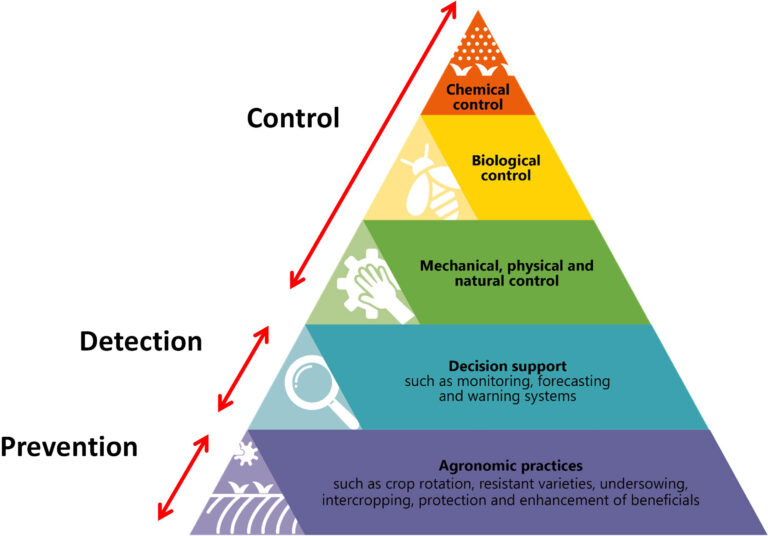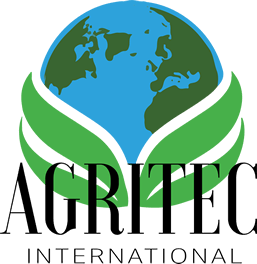Liquid Calcium & Integrated Pest Management
When practicing sustainable agriculture, Integrated Pest Management (IPM) is a critical strategy for reducing reliance on harmful chemical pesticides while maintaining high crop yields. When aiming for sustainability in your agricultural endeavors, combining IPM with liquid calcium can work great. They can have a plethora of positive effects that come from can enhancing plant resistance to pests and diseases. AgriTec International specializes in liquid soil amendments and fertilizers, so we understand how liquid calcium can be a pivotal element in this integrated approach.

Understanding IPM
According to the United States Environmental Protection Agency, “IPM is not a single pest control method but, rather, a series of pest management evaluations, decisions and controls”. IPM involves determining thresholds before action is taken, identifying which pests are involved, and using preventative methods like crop timing. If all of those previous steps have passed and it’s been proven that action needs to be taken, such as “highly targeted chemicals, such as pheromones to disrupt pest mating, or mechanical control, such as trapping or weeding” (“Integrated” par. 6). Full-on chemical pesticides are usually used as a last resort to minimize the environmental and economic impact they could have on your crops. The goal of IPM is not to eradicate all pests, but to manage them in a way that is economically viable and ecologically responsible.
The Role of Liquid Calcium in IPM
Liquid calcium is primarily known for its ability to speedily improve plant nutrition and soil quality using natural, necessary elements for soil health. It enhances cell wall strength in plants, which can indirectly contribute to increased resistance against pests and diseases. Here’s how integrating liquid calcium into an IPM strategy can benefit crop protection:
- Enhanced Plant Structure and Health: Calcium is a critical nutrient that contributes to the structural strength of plant cell walls. Plants with stronger cell walls are physically more robust and can better resist the invasion of pathogens and damage by pests. This physical barrier is often the first line of defense against many types of insects and infections.
- Improved Natural Defense Mechanisms: Studies have shown that having adequate calcium availability can help plants activate their natural defense mechanisms when under attack by pests and pathogens. This includes the regulation of various defense-related enzymes and hormones. By strengthening these natural defense systems, plants can more effectively deter or mitigate the impacts of pests.
- Reduced Need for Chemical Pesticides: By improving overall plant health and resistance, liquid calcium can reduce the need for chemical interventions. Healthier plants are less susceptible to diseases and pest infestations, which aligns with the IPM principle of minimizing the use of chemical pesticides. This not only helps in maintaining ecological balance but also reduces farming costs associated with pesticide use.
- Synergistic Effects with Other IPM Components: Liquid calcium can be effectively combined with other IPM strategies for even greater effect. For example, when used alongside biological control methods, such as the introduction of natural predators or beneficial microbes , liquid calcium can ensure that plants are healthy and more capable of withstanding the slight stressors introduced by these biological agents.
Implementing Liquid Calcium within an IPM Program
To effectively integrate liquid calcium into an IPM program, it is crucial to understand both the specific needs of the crop and the nature of the pest pressures it faces. Here are some steps that AgriTec International recommends:
- Soil and Tissue Analysis: Regular testing of soil and plant tissues can help determine the precise calcium needs of crops, ensuring that applications are timely and effective.
- Application Timing and Methods: The timing and methods of liquid calcium application should be optimized based on crop stage and specific growing conditions. Foliar applications, for example, can be particularly effective during critical growth phases when plants are more vulnerable to pests.
- Monitoring and Thresholds: Continuous monitoring of pest levels and plant health helps determine when additional IPM interventions are necessary.
Citations:
- Integrated Pest Management (IPM) Principles | US EPA. (2023, September 20). US EPA. https://www.epa.gov/safepestcontrol/integrated-pest-management-ipm-principles
- Collier, R. (2023). Pest insect management in vegetable crops grown outdoors in northern Europe – approaches at the bottom of the IPM pyramid. Frontiers in Horticulture, 2. https://doi.org/10.3389/fhort.2023.1159375


